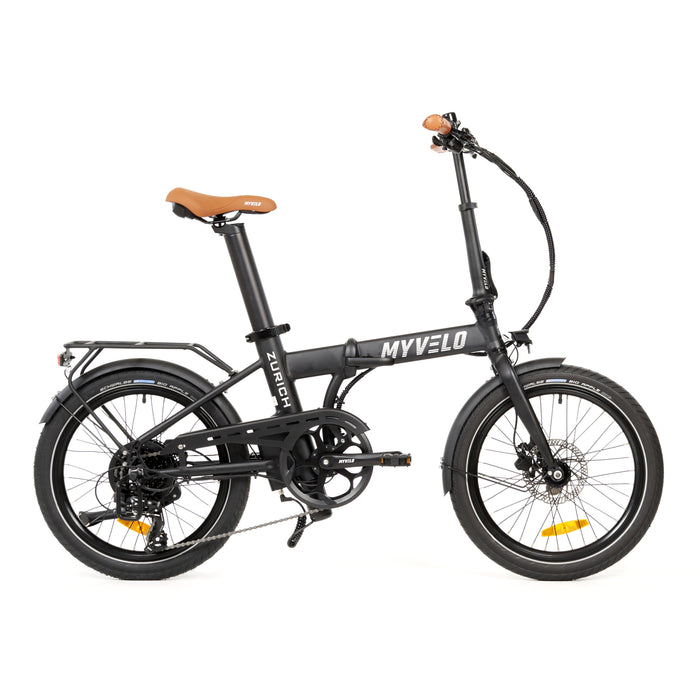
Zurich electric folding bike
incl. FREE shipping & free returns
Ready for dispatch immediately, delivery time 2-3 days.

The commute – for many of us, a daily ritual often associated with traffic, congestion, and a large carbon footprint. But there are many ways you can make your commute more environmentally friendly without sacrificing comfort or efficiency. In times of climate change and increasing air pollution, it's even more important to reduce our footprint and find more sustainable alternatives.
Von Lukas Vogt |
3 minutes read time

In this article we will show you practical Tips on how to make your commute more efficient, healthier, and more environmentally friendly – for a greener future and a better quality of life.
One of the easiest and most effective ways to make your commute more environmentally friendly is to use public transportation. Trams, buses, and trains are generally significantly more environmentally friendly than cars, as they produce less CO₂ per person and reduce traffic congestion.
Tip: If you live in a big city, check if there are monthly passes or company tickets that can save you additional costs and provide an incentive to switch to public transport regularly.
The bicycle is one of the most environmentally friendly means of transportation. It produces no emissions, requires no fuel, and is also good for your health. Whether you live in the city or the countryside, the bicycle is often the fastest, cheapest, and most environmentally friendly alternative.
Tip: If you're traveling longer distances, consider e-bikes. These offer assistance on hilly routes and allow you to reach your destination faster and with less effort.

If public transport or cycling aren't an option, car sharing or ride-sharing can be a great solution. By sharing your commute with other drivers, you not only reduce your CO₂ emissions but also your travel costs.
Tip: There are many apps and platforms that make it easy to find rides – both for regular commuters and for one-time trips.
If your work situation allows, telecommuting is one of the best ways to avoid your commute while living a more environmentally friendly lifestyle. Working from home not only reduces CO₂ emissions by eliminating the commute but also allows for a better work-life balance.
Tip: Talk to your employer about whether there is the possibility of introducing flexible working hours or home office days to reduce your commute.

Carpooling is an excellent way to reduce CO₂ emissions while sharing costs. Sharing carpools with colleagues or neighbors instead of alone can significantly reduce vehicle consumption and emissions.
Tip: Many cities and companies offer special ride-sharing apps or platforms that help you quickly find like-minded people for a ride.

If you rely on a car, an electric vehicle (EV) can be a highly sustainable alternative to conventional gasoline or diesel vehicles. Electric cars produce no CO₂ emissions while driving and are significantly more environmentally friendly, especially when powered by green electricity.
Tip: If switching to an electric car is an option for you, check out subsidy programs or tax benefits that can support the purchase of an electric vehicle.
There are many ways you can make your commute more environmentally friendly – whether by switching to public transportation, cycling, or car sharing. Telecommuting and electric vehicles also contribute to a better carbon footprint. By using sustainable transportation, you're not only contributing to climate protection but also improving your quality of life and health.